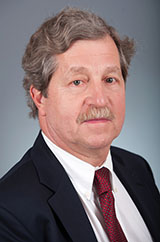Posted April 24, 2014
Charles A. Nelson III, Ph.D., Boston Children's Hospital
 Nearly 60% of all children with tuberous sclerosis complex (TSC) also exhibit autism spectrum disorder (ASD), a range of neurodevelopmental disorders characterized by impairments in social interaction and communication, repetitive behaviors and interests, and possible cognitive delays. Because the prevalence of ASD in the general population is significantly lower, it is clear that there is an association between TSC and ASD. Although evidence suggests that the abnormalities in brain development present in children with TSC might interfere with areas important for social communication, the precise link between TSC and ASD is largely unknown. The diagnosis of ASD at a young age is crucial for early intervention strategies, which can dramatically improve developmental outcomes. However, the developmental disabilities associated with TSC often confound the diagnosis of ASD, which typically relies on evidence-based assessment of ASD symptoms.
Nearly 60% of all children with tuberous sclerosis complex (TSC) also exhibit autism spectrum disorder (ASD), a range of neurodevelopmental disorders characterized by impairments in social interaction and communication, repetitive behaviors and interests, and possible cognitive delays. Because the prevalence of ASD in the general population is significantly lower, it is clear that there is an association between TSC and ASD. Although evidence suggests that the abnormalities in brain development present in children with TSC might interfere with areas important for social communication, the precise link between TSC and ASD is largely unknown. The diagnosis of ASD at a young age is crucial for early intervention strategies, which can dramatically improve developmental outcomes. However, the developmental disabilities associated with TSC often confound the diagnosis of ASD, which typically relies on evidence-based assessment of ASD symptoms.
Dr. Charles Nelson, of Boston Children's Hospital, is the recipient of a Fiscal Year 2010 Clinical Research Award from the Tuberous Sclerosis Complex Research Program (TSCRP) working in collaboration with Shafali Jeste, M.D., of University of California, Los Angeles. Through this award, Dr. Nelson has sought to better define the phenotype of children with TSC and ASD in order to identify markers of ASD that could be used to predict neurocognitive and behavioral outcomes before clinical diagnosis. In one study with children under age four, Dr. Nelson used electroencephalography (EEG), a non-invasive technique that involves the placement of small sensors on the surface of the scalp to measure brain waves, to look at differences in neural correlates of face processing, which is thought to serve as a biomarker of ASD. Interestingly, he found that children with TSC had slower face processing than typically developing children and face processing was particularly slow in the subset of TSC children with ASD diagnoses. In a second study, Dr. Nelson used high-density scalp EEG to compare brain rhythms in infants with, and without, TSC. Through these analyses, he discovered that there were significant differences in EEG frequencies between the two groups as early as 20-24 months of age and he hypothesizes that frequency differences may distinguish ASD in infants with TSC. These studies, along with additional work being done by Dr. Nelson, may provide early markers of ASD in children with TSC prior to clinical diagnosis and allow for effective intervention strategies to improve the child's developmental outcomes and future well-being.
Publications:
Jeste SS, Wu JY, Denturk D, et al. 2014. Early developmental trajectories associated with ASD in infants with Tuberous Sclerosis Complex. Neurology [Accepted]
Stamoulis C, Vogel-Farley V, Degregorio G, et al. 2013. Resting and task modulated high-frequency brain measured by scalp encephalograms in infants with tuberous sclerosis complex. Journal of Autism and Developmental Disorders [Epub ahead of print]
Jeste SS, Hirsch S, Vogel-Farley V, et al. 2012. Atypical face processing in children with tuberous sclerosis complex. Journal of Child Neurology (12):1569-1576.
Links:














